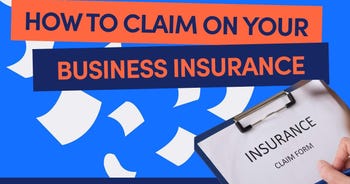Employer Reference Number (ERN): complete UK business guide
What is an ERN number?
Your ERN is a unique combination of numbers and letters that HMRC assigns to identify your business for employment and tax purposes. Also called your PAYE reference number, it connects all your payroll activities to your business records.
Basically, the reference consists of two parts - a three-digit tax office code followed by a forward slash, then letters and numbers that identify your specific business.
For example, it may look like this: 123/AB12345.
HMRC normally uses your ERN to track your PAYE submissions, National Insurance contributions, and employee tax deductions. You'll need it for Real Time Information (RTI) submissions every time you pay your staff.
Where your ERN appears
Your ERN shows up on multiple documents throughout the year:
- Your yellow HMRC welcome booklet when you first register as an employer
- All employee payslips you issue
- P45 forms when employees leave
- P60 annual tax summaries for each employee
- P11D forms for employee benefits
- HMRC correspondence about PAYE matters
Just hired your first employee and need an ERN?
Getting your first ERN happens automatically when you register as an employer with HMRC. You must register before your first payday, even if it's months away.
Call HMRC's employer helpline on 0300 200 3200 to register. They'll ask for your business details, when you plan to start paying employees, and your expected payroll amounts. Registration normally takes about 10 minutes over the phone.
HMRC normally sends your ERN in a yellow booklet within 7-10 working days. This booklet contains your reference number, tax tables, and guidance for your first payroll submissions.
This is for informational purposes only, Bionic does not give tax advice. Always consult a legal professional for your own tax advice.
What information HMRC needs:
When registering for your ERN, have these details ready:
- Your business name and address
- Company registration number (if you're a limited company)
- Your National Insurance number as the business owner
- The date you'll start paying employees
- Estimated annual payroll amount
- Your contact details for any payroll questions
Can't find your ERN for insurance renewal?
Your ERN appears on several documents you likely have at hand or stored away. Check these first:
- Recent payslips - Look in the employer details section, usually at the top or bottom of the payslip
- P60 forms - Your ERN appears clearly marked in the employer information box
- HMRC letters - Any correspondence about PAYE includes your ERN in the reference section
If you still can't locate it, log into your HMRC online account. Your ERN displays on the homepage once you've registered for PAYE online services.
Emergency ERN retrieval
Need your ERN urgently? Call HMRC's employer helpline on 0300 200 3200. They'll verify your identity and provide your ERN over the phone. Have your National Insurance number and business details ready.
For a faster service, use HMRC's webchat during peak hours (8am-4pm Monday to Friday). The chat function should be able to help locate your ERN after security checks.
HMRC rejected your PAYE submission?
ERN errors can sometimes cause PAYE submission rejections. Some common mistakes can include using old reference numbers, typing errors, or mixing up different HMRC references.
Double-check your ERN matches exactly with a recent HMRC letter or your online account. The format must be exact: three digits, forward slash, then the letter/number combination.
Fixing submission errors
If HMRC rejects your submission, there are a few things you should do:
- Check the exact ERN format from official HMRC correspondence
- Verify you're using the correct ERN for the right PAYE scheme
- Resubmit within the original deadline if possible
- Contact HMRC if you're approaching the late filing penalty threshold
RTI submission deadlines - Submit your Full Payment Submission (FPS) on or before each payday. Late submissions can trigger automatic penalties starting at £100 per month for microbusinesses.
Lost your ERN and facing HMRC deadlines?
Don't panic. You should be able to find your ERN quickly through several methods:
- HMRC online services - Log in to view your ERN immediately. If you haven't registered online, you can do this using your existing ERN from any old document.
- Previous tax documents - Check any P45s, P60s, or payslips from the current or previous tax year. Your ERN stays the same unless you've changed your business structure significantly.
- Bank statements - HMRC payments often show your ERN as a reference on your business bank account.
Getting help when time is short
HMRC's employer helpline operates Monday to Friday, 8am to 8pm (8am to 4pm on Saturdays). Call 0300 200 3200 to get your ERN as quickly as possible.
If you're within days of a deadline, you can try to explain your situation. HMRC can often provide additional time to provide the correct information, especially for genuine administrative errors.
Do you need an ERN if you're self-employed?
Self-employed individuals without employees don't need an ERN. But the moment you hire your first employee - even part-time or temporary staff - you must register as an employer.
Tara Mitchell – Insurance Technical Manager at Bionic stats “If you’re hiring family members, casual workers, or anyone who regularly pay for work, your business needs an ERN. Also, if you employ anyone, you’ll also need employers’ liability insurance by law. When arranging this, insurers may ask for ERN information, so it’s a good idea to keep it somewhere easily accessible”.
When you definitely need an ERN
You need an ERN if you:
- Pay any employee more than the lower earnings limit (£123 per week for 2024/2025 and £125 per week for 2025/2026)
- Provide company benefits like health insurance or company cars
- Employ someone who has another job
- Run payroll for directors of your limited company
- Operate construction industry schemes (CIS)
ERN exemptions that could still apply
You may not need an ERN if:
- Your business doesn’t have any employees
- All workers are genuinely self-employed contractors
- You pay only dividends to company shareholders
- All your employees are paid a salary below the PAYE tax threshold (£11,500 a year)
- Your business operates exclusively outside the UK tax system (in Jersey or Guernsey for example).
What if you have multiple locations and need separate ERNs?
If you’re a larger business, you may need multiple ERNs for different locations or operating areas. HMRC can assign separate references when you run distinct payroll operations.
You might need multiple ERNs if you:
- Operate from different geographic locations with separate payrolls
- Run different types of business activities under one company
- Manage seasonal operations that start and stop independently
- Acquired other businesses that have separate PAYE schemes
If you’re not sure, get in touch with HMRC and they’ll be able to help you with your specific business situation.
Managing multiple ERN references
If you have multiple ERNs, then it’s best to manage them properly. Use payroll software that handles multiple schemes to avoid any confusion and missed deadlines.
Keep clear records of which employees belong to which ERN. Mixing employees between schemes can cause compliance issues down the line and end up delaying anything you need to process with HMRC.
ERN requirements for business insurance
In the UK, employers' liability insurance is legally required if you employ anyone – even for a week. Your ERN helps prove to insurers that you're a legitimate employer with HMRC registration.
Insurance companies could use your ERN to:
- Process claims through the Employers' Liability Tracing Office (ELTO)
- Looks at records for future claims, even years after employees leave
Insurance claims and ERN tracking
Employee injury claims can sometimes come out of the woodwork decades after someone left your business. Hearing loss, repetitive strain injuries, and even occupational diseases often develop years later, and ex-employees can attempt to claim if they believe their work environment to be the cause.
ERN numbers can act as a permanent link between your business and insurance coverage at the time of employment. This can potentially protect both you and former employees when claims arise long after ex-employees have moved on.
Changing your business structure affects your ERN
Your ERN changes when you make big changes to your business structure. Converting from sole trader to limited company, merging with another business, or completely changing your operations can sometimes trigger new ERN requirements.
For example, it’s not uncommon for sole traders to grow and become limited companies. When this happens it creates what’s called a ‘new legal entity’. This new entity is different from your previous structure, so you need to register your business again with HMRC.
You should always notify HMRC immediately about any big business changes.
Continuing to use an old ERN after major structural changes could even end up invalidating anything you've submitted to HMRC and potentially affect the validity of your insurance coverage.
When to expect a new ERN
HMRC normally issues new ERNs for these changes:
- A sole trader changing to a limited company
- A partnership becoming a limited company
- Business mergers that combine payroll operations
- Major ownership changes in limited companies
- Moving business registration between different UK territories
PAYE deadlines for employers with the correct ERN
ERNs are connected to strict PAYE deadlines that often have automatic financial penalties for any late submissions. Understanding these deadlines can help protect your business from unnecessary fines.
This means you need to send your payroll on time, so try not to forget your monthly deadline.
You must submit PAYE and National Insurance payments on the 22nd of the following month (19th for postal payments).
Annual deadlines:
- P60s to employees: 31st May
- Expenses and benefits returns (P11D): 6th July
- Class 1A National Insurance: 22nd July (19th for postal payments)
Penalties for late submissions
HMRC penalties start immediately for late submissions and they can quickly add up:
- £100 per month for up to 3 employees
- £200 per month for 4-9 employees
- £300 per month for 10-49 employees
- Higher rates apply for larger employers
Penalties apply even if you owe no tax. Remember, submitting with an incorrect ERN counts as a late submission until you correct it – so it’s best to keep on top of it.
Common ERN mistakes that can cost businesses
As mentioned, submitting the wrong ERN number can potentially become an expensive error. It seems simple, but missing the forward slash, adding extra spaces, or confusing letters and numbers can all trigger rejections and potential penalties.
Watch out for any formatting errors like:
- Writing 123AB12345 instead of 123/AB12345
- Using lowercase letters: 123/ab12345
- Adding spaces: 123 / AB 12345
- Confusing similar characters: 0 and O, 1 and I
Double-checking your ERN accuracy
You should always copy your ERN exactly from official HMRC documents. It's best not to rely on memory or handwritten notes that could have errors.
If you realise at any point that your employee ERN numbers are wrong, contact HMRC straight away to put it right.
Getting help with sorting ERNs and admin
Sorting admin can be tedious task for many small business owners who really don’t have the time. If that’s the case, you can use professional payroll services that help sort your ERNs, tax deadline tracking, and HMRC communications.
It might also be a good idea to consider if:
- You tend to miss HMRC deadlines
- Employ staff with complex pay arrangements
- Want to focus on growing your business rather than admin
Always use a payroll system that is recognised by HMRC.
Protecting your business
ERN numbers can affect more than just tax submissions they can potentially lead to hefty fines, and even invalid business insurance.
Always keep your ERN details updated across all business systems. When you change accountants, payroll providers, or insurance brokers, make sure they have your correct, current ERN.
Need help sorting with employers' liability insurance for your business? We can help with comparing quotes from our trusted panel of insurers. Start a quote online today to get started.








